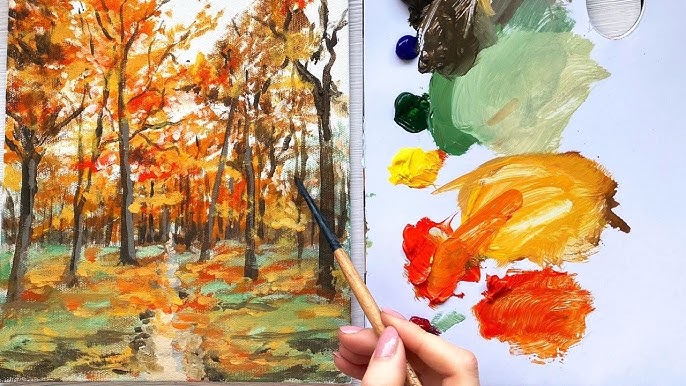Painting acrylic plastic can be a rewarding project, allowing you to transform everyday items into personalized masterpieces. Whether you’re working on a craft project, enhancing home decor, or customizing automotive parts, mastering the art of painting acrylic plastic can elevate your creative endeavors. In this guide, we will explore the essential steps, tips, and tricks on how to paint acrylic plastic effectively, ensuring a professional finish.
Introduction
Acrylic plastic is a popular material known for its durability, clarity, and versatility. However, painting acrylic plastic can be challenging due to its smooth surface and tendency to warp if not treated correctly. This article will provide a detailed step-by-step guide on how to paint acrylic plastic, covering essential materials, preparation, painting techniques, and post-painting care. By the end of this guide, you’ll have all the knowledge you need to paint acrylic plastic like a pro!
Materials Needed
Before diving into the painting process, gather the following materials:
| Material | Purpose |
|---|---|
| Acrylic plastic item | The object you want to paint |
| Sandpaper (fine grit) | To prepare the surface |
| Isopropyl alcohol | For cleaning the surface |
| Primer (for plastics) | To ensure paint adhesion |
| Acrylic paint | The main paint for your project |
| Paintbrushes or spray gun | For applying the paint |
| Clear sealant | To protect the painted surface |
| Drop cloth | To protect your work area |
Step 1: Prepare the Surface
Proper preparation is key to a successful paint job. Here’s how to prepare your acrylic plastic surface:
- Clean the Surface: Start by cleaning the acrylic plastic item with isopropyl alcohol. This removes any dirt, grease, or oils that could interfere with paint adhesion.
- Sand the Surface: Lightly sand the surface with fine-grit sandpaper. This creates a rough texture that helps the primer adhere better. Be gentle to avoid scratching the acrylic too deeply.
- Wipe Down Again: After sanding, wipe the surface with a clean cloth or paper towel to remove any dust or debris.
Step 2: Apply Primer
Priming is a crucial step in how to paint acrylic plastic. Here’s how to do it:
- Choose the Right Primer: Use a primer specifically designed for plastics. These primers help the paint stick to the smooth surface of acrylic plastic.
- Apply the Primer: Using a paintbrush or spray gun, apply a thin, even coat of primer to the acrylic plastic item. Ensure all areas are covered.
- Let It Dry: Allow the primer to dry completely according to the manufacturer’s instructions. This usually takes about 30 minutes to an hour.
Step 3: Paint the Acrylic Plastic
Now comes the fun part—painting! Here’s how to apply the paint:
- Select Your Acrylic Paint: Choose high-quality acrylic paint that is suitable for plastic. This ensures durability and a vibrant finish.
- Use Thin Coats: When applying the paint, use thin, even coats. This prevents drips and ensures a smooth finish. If using a spray gun, hold it at least 6-12 inches away from the surface.
- Multiple Coats: Apply multiple thin coats rather than one thick coat. Allow each coat to dry completely before applying the next. This process is essential in learning how to paint acrylic plastic effectively.
- Drying Time: Depending on the type of paint, drying times may vary. Be patient and follow the paint manufacturer’s instructions.
Step 4: Apply a Clear Sealant
To protect your painted acrylic plastic item, applying a clear sealant is recommended:
- Choose the Right Sealant: Use a clear sealant compatible with acrylic paint. A spray sealant is often easiest to apply.
- Apply Evenly: Just like with the paint, apply the sealant in thin, even coats. Allow each coat to dry completely.
- Final Drying: Once the final coat of sealant has dried, your acrylic plastic item will be ready for use!
Q&A Section
Q1: Can I use regular spray paint on acrylic plastic?
A: While you can use regular spray paint, it’s recommended to use acrylic paint specifically designed for plastic to ensure proper adhesion and durability.
Q2: How do I fix drips or runs in the paint?
A: If you notice drips, wait for the paint to dry, then lightly sand the area and repaint it with a thin coat.
Q3: Can I paint over an already painted acrylic plastic surface?
A: Yes, you can paint over an existing painted surface, but make sure to sand it lightly and clean it thoroughly first.
Q4: How long will the painted surface last?
A: With proper preparation, application, and sealing, the paint can last several years without chipping or fading.
Q5: Is it safe to paint acrylic plastic indoors?
A: It is best to paint in a well-ventilated area or outdoors to avoid inhaling fumes from the paint and primer.
Conclusion
Painting acrylic plastic can seem daunting, but with the right tools and techniques, you can achieve professional results. By following the steps outlined in this guide, you will learn how to paint acrylic plastic effectively, enhancing your projects with vibrant colors and durable finishes. Remember to take your time with each step and allow adequate drying time between coats. Happy painting!

